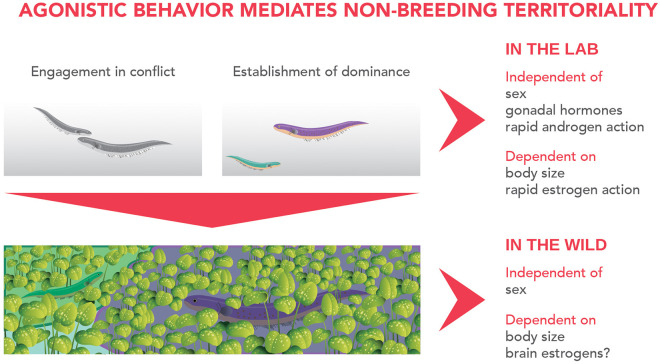Figure 1.
Events and underlying mechanisms of non-breeding territoriality in Gymnotus omarorum. Laboratory evidence shows that agonistic behavior mediates territory acquisition, as after conflict resolution dominant animals monopolize the territory and actively exclude subordinate fish to the periphery of the tank. Body size, but not sex, is a strong predictor of conflict outcome. Aggression is maintained even in gonadectomized animals, indicating its independence of gonadal hormones. Behavioral pharmacology evinces aggression is also independent of rapid actions of androgens, although strongly dependent on rapid estrogenic action, as an aromatase inhibitor greatly influences conflict engagement, aggression intensity and establishment of dominance. This evidence suggests that brain-derived estrogens play a key role in agonistic behavior. Agonistic behavior most probably underlies territorial spacing in the natural habitat. Territory sizes are not sex-biased, but do depend on body size, and we propose that at least in the short-term after dominance establishment, they also correlate to brain estrogen levels.

